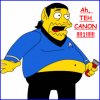So I don't see why it's any harder to use the same handwave here.
'cause they change it all back. It's difficult to understand why they would revert to what is clearly a lower technology level after making such a big leap forward, all within the span of a decade. It would be like having Apple II's in 1990, iPhone X's in 1993, and then back Performa PCs in 2000.
I once tried to come up with an explanation for a similar visual evolution/devolution as part of a crazy plan to reconcile the JJ Verse and the Prime Verse as the same universe. And, hey, it kinda worked. But it required some intense suspension of disbelief, and plenty of folks said it was a crazy idea at the time. (Essentially, I posited that Starfleet made a major technological breakthrough, implemented it throughout the fleet, but then a disastrous technical flaw revealed several years later forced them to roll everything back until the problem could be worked out in time for TMP.) Now something quite similar is canon.
This is, as always, not dispositive. Discovery could bend canon beyond the breaking point and still be a good television program. The root problem is I think it's a very bad television program. Because it is already bad, when it comes along and breaks canon, I'm not inclined to put in the mental work necessary to deal with it. And since Discovery absolutely delights in breaking canon, which breaks immersion for me as a viewer, they really are demanding a lot of mental effort from me.






 The only character given the "Prime" designation was Nimoy's Spock from ST09 who's supposedly from some time after Nemesis. So that would make it everything post First Contact (last film dealing with time travel before ST09) right?
The only character given the "Prime" designation was Nimoy's Spock from ST09 who's supposedly from some time after Nemesis. So that would make it everything post First Contact (last film dealing with time travel before ST09) right? WRONG!
WRONG! A model of the NX-01 is in Into Darkness so that makes it Enterprise post Storm Front, Part II (last episode with time travel shenanigans).
A model of the NX-01 is in Into Darkness so that makes it Enterprise post Storm Front, Part II (last episode with time travel shenanigans). 

